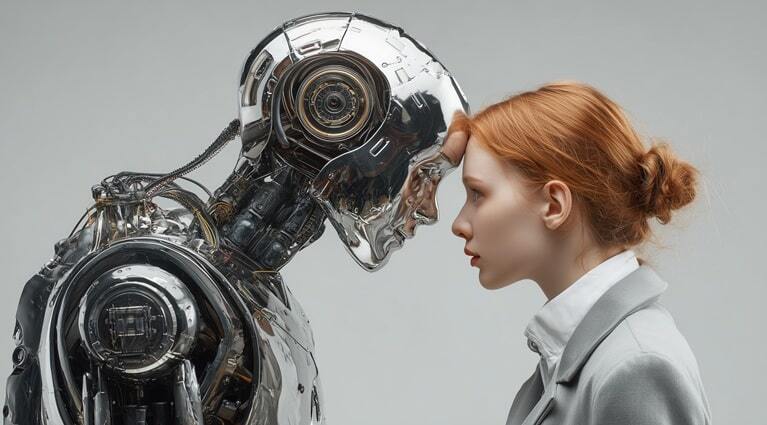The changing face of testing
Modern software delivery moves at an incredible pace. Applications are more complex, release cycles are faster, and the demand for both speed and quality leaves little margin for error. Traditional testing approaches, even with automation, are struggling to keep up.
Teams face persistent challenges: test design and case creation remain manual and slow, automation scripts are brittle and demand constant rework, and long feedback cycles delay defect detection. Coverage gaps heighten release risks, while insights stay reactive instead of predictive. Testing is time-consuming, costly, uneven, and people-dependent. Businesses sometimes complain that even after spending a lot on testing, the production is still buggy.
This is where artificial intelligence steps in. The industry is moving beyond incremental gains with AI-assisted tools to a new paradigm: AI-augmented testing. By combining the autonomy of AI agents with the orchestration power of MCP servers, organizations can reimagine their end-to-end testing workflows: eliminating inefficiencies, scaling effortlessly, and accelerating releases without compromising on quality. The future of testing is no longer about simply keeping up, it’s also about moving ahead. Workflows that adapt, scale, and accelerate without bottlenecks are becoming the foundation of faster, more reliable releases. And the shift is accelerating: Gartner predicts that by 2027, 80% of enterprises will integrate AI-augmented testing into their toolchain, up from just 15% in 2023.
Let’s briefly go through the details of an AI agent and how it is revolutionizing the way we perform testing.
The role of AI agents in testing
An AI agent is a software program that observes its environment, gathers data, and autonomously performs tasks aligned with predefined goals. Humans define the objectives, but the agent independently determines the best sequence of actions to achieve them.
For example, an AI testing agent assigned to validate a login workflow could generate test cases, execute them, analyze application responses, identify failures, and even adapt scripts when UI elements change, all with minimal human intervention.
Key principles of AI agents in testing

Autonomy
AI agents operate independently, making decisions without constant human supervision. Unlike rigid automation scripts, agents determine next steps by evaluating past results, system state, and application behavior.
Example: An agent automatically re-runs failing tests after updating test data or modifying environment configurations.
Goal-oriented behavior
Agents prioritize tasks that maximize coverage, expose high-risk defects, or validate critical workflows.
Example: An agent focuses on edge-case scenarios most likely to impact production systems.
Perception
Agents gather input from applications, logs, APIs, and external systems.
Example: A UI agent detects a layout change and automatically updates locators or adjusts test steps.
Rationality
Agents reason with contextual information, past outcomes, and domain knowledge to ensure meaningful testing actions.
Example: An agent reviews test failures to determine whether they stem from environment issues, code defects, or outdated scripts.
Continuous learning
Agents evolve through feedback from production incidents, defect clustering, and analytics.
Example: An agent learns which API endpoints frequently show latency issues and prioritizes them in future tests.
"AI agents are not replacements for testers. They work alongside quality engineers, co-ordinating tasks, sharing insights, and optimizing workflows. However, if the context provided to the agent is incomplete or inaccurate, its output will also suffer. Quality engineers play a crucial role in supplying the right application context, framework details, and validation criteria."
The advent of agents has also transformed the way we do testing, from being AI assistive to AI-augmented. Let’s take a quick look at it.
What are MCP servers?
Model Context Protocol (MCP) servers act as middleware to connect AI agents with the tools, applications, and environments they need to interact with. While AI agents handle reasoning and decision-making, MCP servers provide the execution layer that ensures agents can act reliably within complex enterprise systems.
Think of MCP servers as translators: they expose standardized APIs and capabilities of applications in a way that AI agents can easily consume.
From AI-assistive to AI-augmented testing
The first wave of AI in testing has been assistive in its role. While these solutions help testers with recommendations, test case generation or code suggestions, it is only humans who remain fully responsible for their execution and orchestration.
Although assistive AI does provide incremental productivity gains, testers still spend a lot of time and effort on repetitive tasks such as regression design, test maintenance, and prioritization.
The next stage is AI-augmented testing. Here, AI agents go beyond simple executions by understanding the system context and performing workflows with minimal human intervention. They can automatically generate end-to-end test scripts, adapt and expand test suites, optimize regression selection, and maintain scripts in real time, all guided by application details, user stories, framework context, and tester input.
When integrated with MCP servers, the capabilities of AI agents extend further. MCP servers act as the communication layer between AI agents and enterprise systems, enabling seamless orchestration across CI/CD pipelines, test environments, and heterogeneous tool chains. This ensures that testing is continuous, context-aware, and adaptable to system changes in real time.
How AI agents and MCP servers work together
The diagram below illustrates how AI agents and MCP servers collaborate in the testing workflow.
 Collaboration between AI agents and MCP servers
Collaboration between AI agents and MCP servers
The agent receives a prompt and when guided by predefined rules and context, it plans and divides tasks into smaller steps. Through the MCP server, it invokes the right tools or functions, analyzes results, updates memory, and continuously adapts until the goal is achieved. This loop enables results that are not only faster but also more reliable and aligned with enterprise workflows.
Why do we need MCP servers?
AI agents are powerful at reasoning but limited in how they interact with the software ecosystem. Without MCP servers, they face significant challenges:
Limited tool access
Agents cannot directly integrate with enterprise tools like Jira, Playwright, Jenkins, or Confluence. They either require custom connectors or brittle API calls. MCP servers standardize this access, reducing any integration complexity.
Context management
Agents operate only on data they can perceive, but their context is often incomplete. MCP servers provide structured context such as project configurations, environment states, or test frameworks based on connected tools, ensuring agents always work with accurate and current information.
The best way to understand the impact of AI agents and MCP servers is through a simple but universal example: the login workflow. Every application has one, and every tester knows how often small changes here can cause ripple effects across the test suite.
Without MCP: Intelligent but blind
We began by prompting an AI agent: "Generate a Playwright test script for the login workflow of my application."
The agent quickly produced a script with username, password, and login button selectors. Impressive but generic. It lacked our real application context: custom selectors, authentication rules, environment variables, and test data.
The result? We had to manually adapt the script, validate it against our framework, and repeat the process whenever the UI changed. The AI saved time in script generation but left us with ongoing maintenance overhead.
With MCP: Intelligent and context-aware
Next, we connected the same AI agent to a Playwright MCP server and tried the same prompt. This time, the outcome was very different.
The MCP server provided the agent with real-time context: the current DOM structure, selectors from our environment, authentication logic, and test data rules. The script it generated wasn’t generic but was executable in our actual application.
Even better, when the login page was updated, the MCP server surfaced the changes, and the agent adapted the script automatically. Failures were not any dead-ends; they became learning opportunities. The system not only tested but also evolved with the application.
Use cases: Where it worked well for us
The power of AI agents combined with MCP servers becomes evident when we look at how they transform everyday testing challenges into opportunities for acceleration and resilience. Across different phases of the testing lifecycle, the impact has been both practical and measurable.
Test design and generation
Traditionally, creating test cases or scripts from requirements has been a slow and manual activity. With AI agents connected through MCP servers, it became possible to generate test cases directly from user stories, acceptance criteria, and API documentation. What once took hours of effort now happens in minutes.
- User interface scripts were generated automatically from designed test cases.
- API tests were created seamlessly from contracts and documentation.
- Data-driven test design became simpler with the use of real-world or synthetic datasets.
The result
Test design shifted from a bottleneck to an accelerator, ensuring broader coverage from the very beginning.
Execution and maintenance
Script fragility ranks as one of the most important pain points in test automation. A small UI change often breaks dozens of scripts, leading to long debugging sessions. With AI agents leveraging Playwright MCP integration, scripts could adapt automatically to minor UI or workflow changes. Failures were not just reported but also analyzed, fixed, and validated with minimal human intervention.
- Scripts automatically healed themselves when selectors or flows changed.
- Legacy scripts were converted across frameworks without starting from scratch.
- Failure analysis pinpointed whether issues stemmed from code, environment, or outdated tests.
The result
Regression cycles became faster, more stable, and far less dependent on manual upkeep.
Quality insights and reporting
Execution is only half the battle. Making sense of results is where real business value lies. By connecting agents with reporting tools through MCP servers, insights became proactive rather than reactive.
- Release readiness reports were generated automatically from execution data.
- Failures were grouped by root cause, giving teams immediate direction.
- Quick sanity tests of failed scripts from previous cycles ensured recurring issues were caught early.
The result
Stakeholders had clear, data-driven confidence in release quality without waiting for manual reporting.
The business value of AI agents in testing
AI agents are not just another automation upgrade but much more than that. They represent a paradigm shift in how organizations approach quality assurance. Beyond technical advantages, their real power lies in the business outcomes they enable:
- Lower testing costs – self-healing reduces maintenance overhead.
- Faster time-to-market – adaptive execution shortens release cycles.
- Improved reliability – proactive defect prevention reduces leakage.
- Maximized ROI on automation – automation investments sustain longer.
- Smarter risk management – prioritize high-impact scenarios.
- Scalable quality without scaling costs – coverage expands without team size growth.
- Better customer experience – resilient releases lead to happier users.
Conclusion
The combination of AI agents and MCP servers is not only the next step in automation but also the foundation of a new testing paradigm. Together, they eliminate inefficiencies, adapt in real time, and scale effortlessly.
This isn’t about replacing testers, but about empowering them to focus on higher-value activities while intelligent systems handle the heavy lifting.
The future of testing is not just faster but also smarter, adaptive, and built to move ahead of change.
References - https://aws.amazon.com/what-is/ai-agents/





